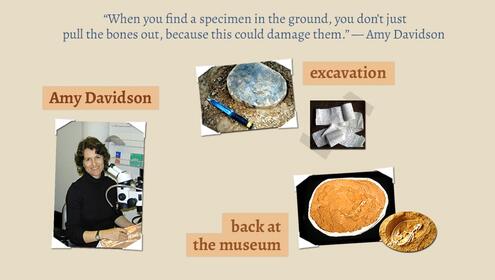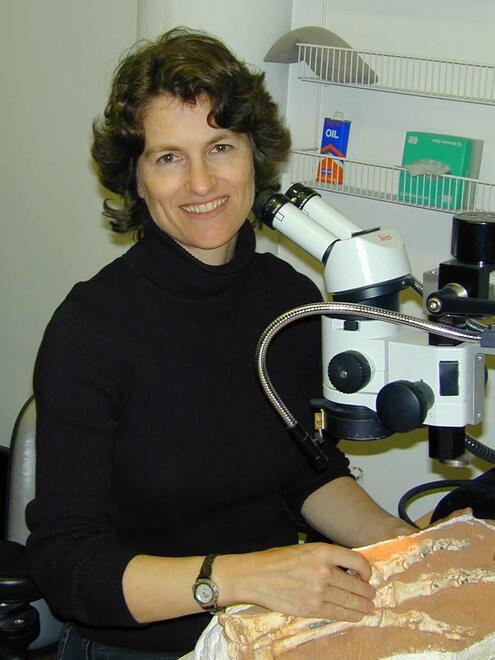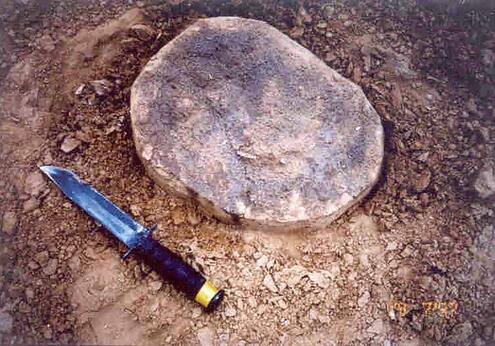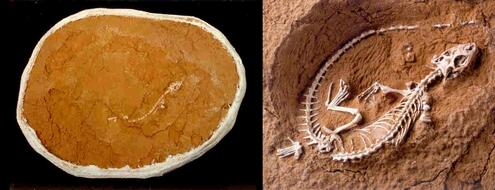
Click the ( + ) signs to explore the items in our scrapbook.

Finding fossils is only half the story. Getting them home safely is just as important. Take a look at how a fossilized lizard was excavated from a sand hill in the Gobi Desert and transported back to the Museum.



Amy Davidson
Amy Davidson, a fossil preparator at the Museum, returns to the Gobi each summer to help search for fossils and then wrap them for transport, using a process called jacketing. Amy began her career as a sculptor, but then, motivated by her passion for natural history, she learned how to prepare fossils from an expert at Harvard University.
"When you find a specimen in the ground, you don't just pull the bones out, because this could damage them." — Amy Davidson
excavation
Instead, you excavate the block of rock that surrounds the specimen, using a knife. Cutting through the soft dirt at Ukhaa is kind of like cutting through a block of cheese. Before we cut out a block, we put some thin glue on top of the fossil to protect it.

back at the Museum
Here we see the half-prepared lizard back at the Museum. Notice that Amy has cut off the top half of the jacket. This is Amy’s favorite part of the process because it is like opening a time capsule. The specimen was sealed in the field months before–now the work to expose and study the fossil begins.

Image Credits:
Excavation, courtesy Discovery Channel Online; Amy Davidson and fossils, courtesy of AMNH




 Biodiversity
Biodiversity
 Brain
Brain
 Genetics
Genetics
 Marine BiOLogy
Marine BiOLogy
 MicrobiOLogy
MicrobiOLogy
 PaleontOLogy
PaleontOLogy
 ZoOLogy
ZoOLogy
 AnthropOLogy
AnthropOLogy
 ArchaeOLogy
ArchaeOLogy
 Astronomy
Astronomy
 Climate Change
Climate Change
 Earth
Earth
 Physics
Physics
 Water
Water

